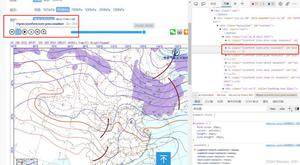四、python沉淀之路--元组

一、元组基本属性
1、元组不能被修改,不能被增加、不能被删除
2、两个属性
tu.count(22) #获取指定元素在元组中出现的次数
tu.index(22) #获取指定元素的缩影位置
二、元组的基本方法
1、书写格式
tu = (11,33,"hello",(88,555),[("nice",44),True])一般写元组的时候,推荐在最后加入 逗号
2、可以被索引、切片
1 tu = (11,33,"hello",(88,555),[("nice",44),True],[22,77])2 #索引
3 print(tu[1])
4 #切片
5 tu1 = tu[1:4]
6 print(tu1)
1 332 (33, 'hello', (88, 555))
3、可以被for 循环,可迭代对象
1 tu = (11,33,"hello",(88,555),[("nice",44),True],[22,77])2 for i in tu:
3 print(i)
1 112 33
3 hello
4 (88, 555)
5 [('nice', 44), True]
6 [22, 77]
4、转换
1 tu = (11,33,"hello",(88,555),[("nice",44),True],[22,77]) 2 #元组可以通过for 循环转成字符串
3 s0 = ""
4 for i in tu:
5 s0 =s0 +str(i)
6 print(s0)
7 #元组可以直接转换成列表
8 li = list(tu)
9 print(li)
10 #字符串可以直接转换成元组
11 s = "abcdef"
12 tu1 = tuple(s)
13 print(tu1)
14 #列表可以直接转换成元组
15 li1 = [22,55,"hello"]
16 tu2 = tuple(li1)
17 print(tu2)
1 1133hello(88, 555)[('nice', 44), True][22, 77]2 [11, 33, 'hello', (88, 555), [('nice', 44), True], [22, 77]]
3 ('a', 'b', 'c', 'd', 'e', 'f')
4 (22, 55, 'hello')
5、元组的一级元素不可以被修改,删除,增加
1 tu = (11,33,"hello",(88,555),[("nice",44),True],[22,77])2 #print(tu[0]=98) 修改会报错
3 print(tu[4][0][0])
4 print(tu[5][1])
5 # 元组,有序
1 nice2 77
以上是 四、python沉淀之路--元组 的全部内容, 来源链接: utcz.com/z/388304.html



